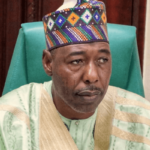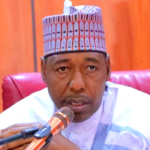The founder and chairman of Cash Token Africa, Chief Lai Labode, has described Egbaliganza as more than just a cultural movement, saying it is a revolutionary blueprint for Africa’s next renaissance.
Speaking passionately about the initiative, Labode said Egbaliganza was a deliberate and soulful effort to celebrate and elevate the heritage of the Egba people in Ogun State, while offering a bold cultural model for the rest of the continent.
“Egbaliganza is more than clothes. It’s more than a celebration. It’s the blueprint for how people can honour their past while designing their future,” Labode added.
Launched during the 2025 Lisabi Festival, Egbaliganza made waves with bold fashion displays, but the real substance lies beneath. Rooted in identity, built with purpose, and scaled with vision, Egbaliganza represents a shift in how Africans relate to heritage, economy, and power.
“At the heart of the initiative is a 50-year development master plan that weaves together fashion, urban planning, youth mentorship, the arts, and pan-African leadership. “We are rebuilding Egbaland from the ground up—not just with infrastructure, but with ideas,” Labode explained.
That master plan includes creating three heritage zones in Abeokuta: cultural neighbourhoods filled with monuments, walkways, domes, and interactive art. “We aim to make history visible. Every monument, every sculpture, every dome will tell a story—from Lisabi to ex-President Olusegun Obasanjo, from ancient warriors to living legends.”
But it all started with fashion. During the 2025 unveiling, Egbaliganza featured 840 custom-made attires, many crafted by local artisans. Each design carried a story. “The Abetieye cap, for instance, is worn only by the king and signifies divine leadership. Even our trousers have names like Kurunmi and Ologun Asiko, each linked to Egba history,” Labode affirmed.
Labode emphasised that this wasn’t fashion for spectacle, adding that, “Fashion is strategy. Our designs are embedded with meaning. Walking the runway, we are telling our story without speaking.”
Beyond history, Egbaliganza is about empowerment. The project brought together a multigenerational team of creatives, historians, chiefs, designers, and young professionals. “This isn’t a solo project. It’s a collective mission. We had people fly in from the UK, young creatives from Lagos, and elders from the palace—all working together,” he said.
Local artisans played a key role. “We sourced everything locally—fabric, coral beads, embroidery, and gold accessories. We refused to import what we already had at home. That’s part of the philosophy. If you want to build a $500 billion African fashion industry, it starts with trusting your own,” he noted.
Indeed, Labode envisions Egbaliganza as the catalyst for a continent-wide fashion and cultural economy. “Africa currently owns just 1.2 percent of the global fashion market. That’s not only unfair, it’s a missed opportunity. We want to raise that to 15 percent.”
His strategy? Collaboration. In 2026, Egbaliganza will host the African Fashion and Heritage Conference, bringing together designers, cultural leaders, and presidents from across Africa and the diaspora. “We’ve already spoken with President William Ruto of Kenya. He talks about Africa, but we told him he needs to wear Africa too.”
Egbaliganza also offers its blueprint to other ethnic groups. “From Egbaliganza to Afroliganza, we’re encouraging every tribe—Hausa, Ijaw, Tiv, Benin—to create their version. And we’ll support them. Our story should inspire others to write theirs.”
Leadership, for Lai Labode, means lifting others as you rise. “We’re not doing this to be praised. We’re doing this to awaken a continent,” he said.
The personal inspiration for Egbaliganza came unexpectedly. During a palace visit, Kabiyesi Alake recounted the story of a woman who escaped a forced marriage by running to a sacred sanctuary. That woman turned out to be Labode’s grandmother. “At that moment, something changed in me. I realised this wasn’t just about culture. It was a divine assignment.”
He also credits Kabiyesi and the Egba chiefs for giving their blessing. “They understood this wasn’t rebellion. This was restoration.They backed us, and it gave the project credibility,” he said.
Labode was quick to point out that cultural integrity remains a priority. “We’re not eroding tradition. We’re modernising it with respect. The Egba of today still hold the values of the past—just now with better tools and louder voices.”
His ultimate goal? A pan-African cultural awakening. “I want to see a world where African leaders wear attire that speaks of their people. Where our children walk through cities and learn our history through the walls. Where fashion, art, and policy walk hand in hand.”
Egbaliganza, he insisted, is only the beginning. “We are building a new story for Africa—stitched in pride, coloured in resilience, and designed with legacy in mind.”
When asked what he wants to be remembered for, his answer is simple yet powerful: “That I helped Africa remember itself.”
We’ve got the edge. Get real-time reports, breaking scoops, and exclusive angles delivered straight to your phone. Don’t settle for stale news. Join LEADERSHIP NEWS on WhatsApp for 24/7 updates →









